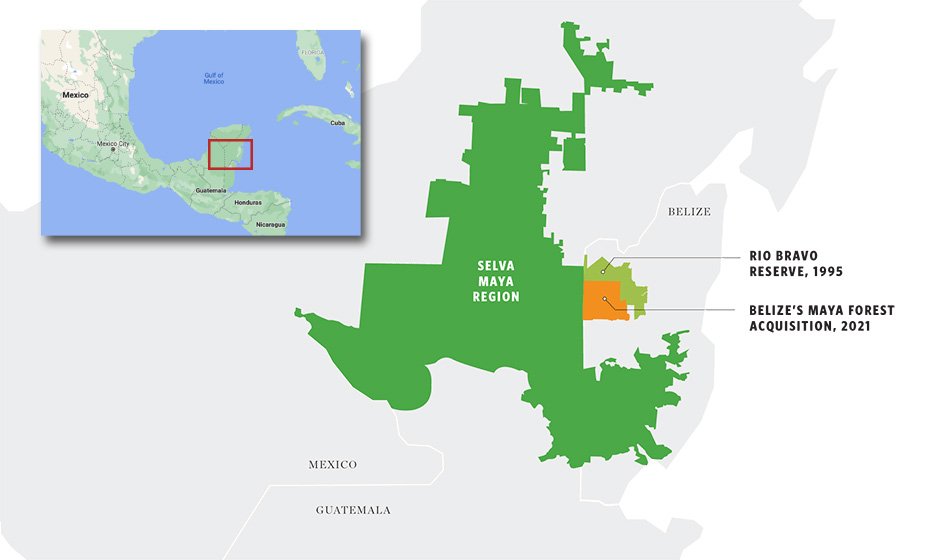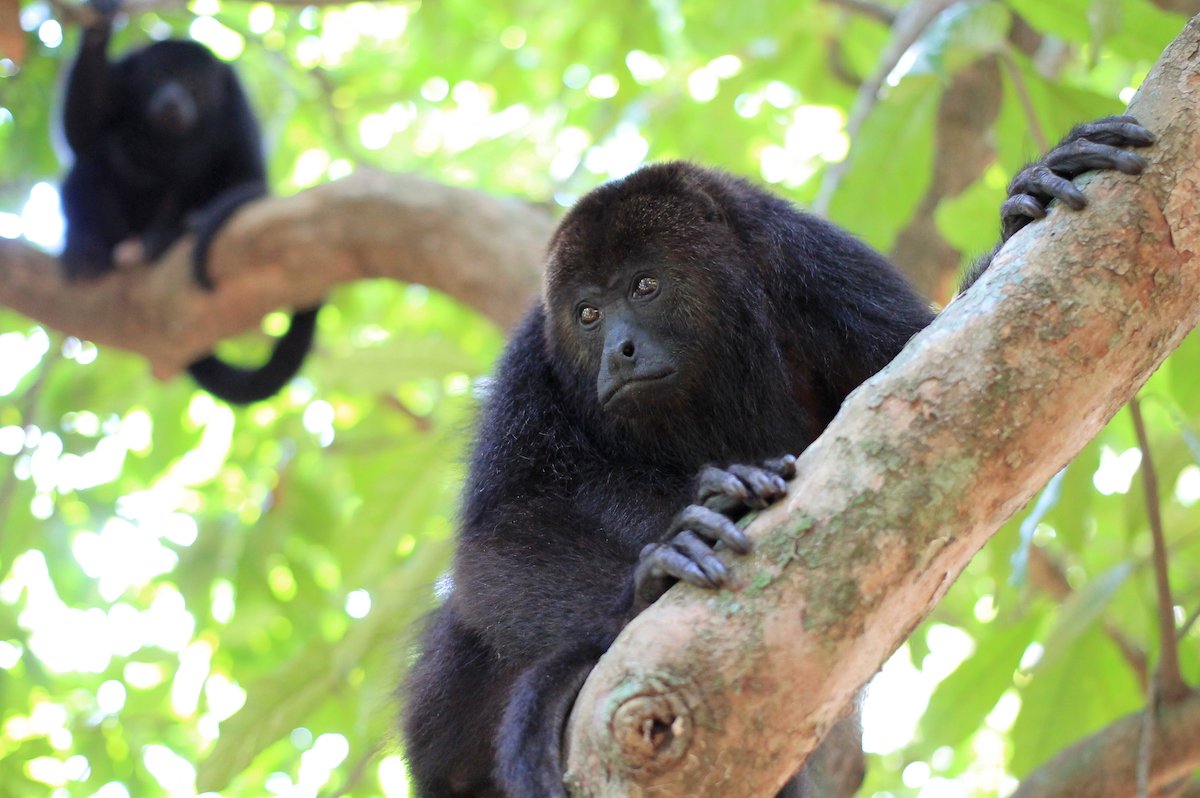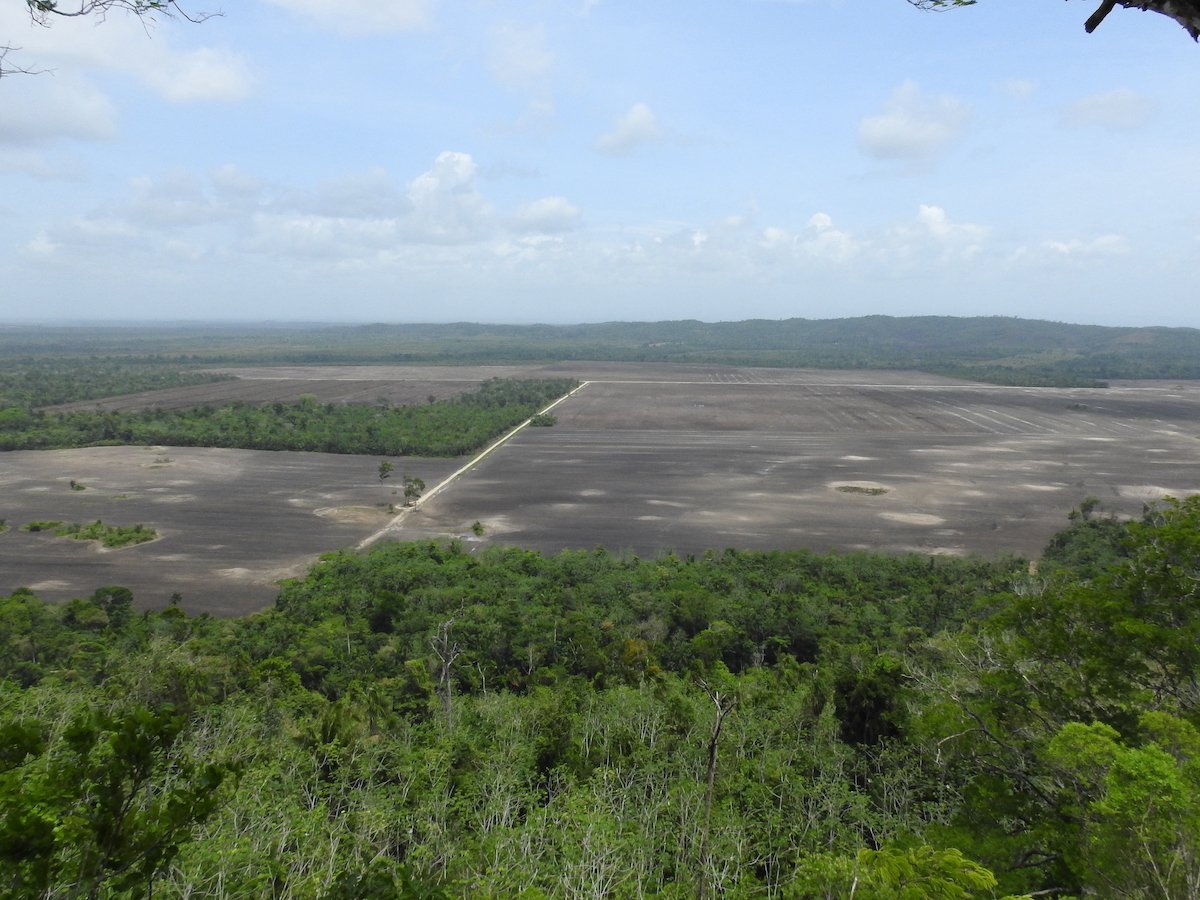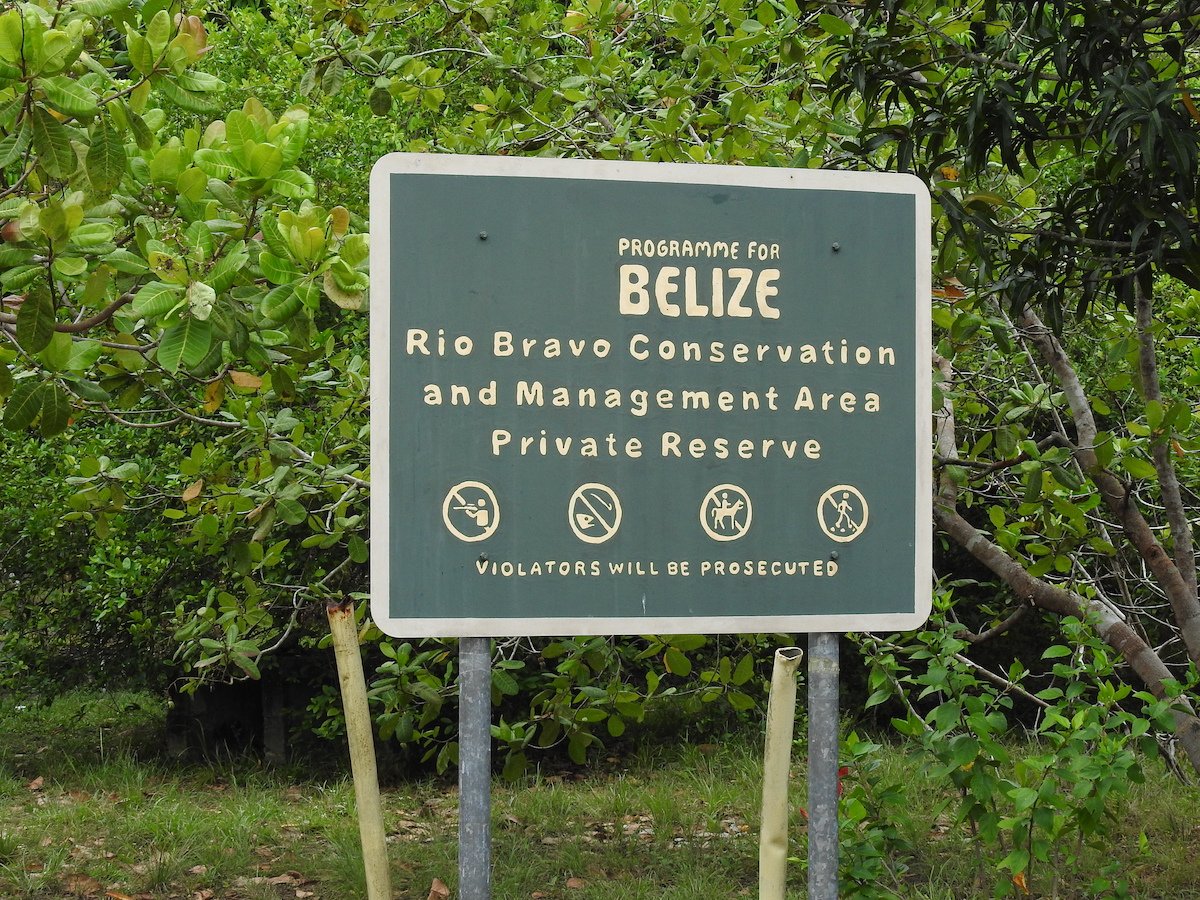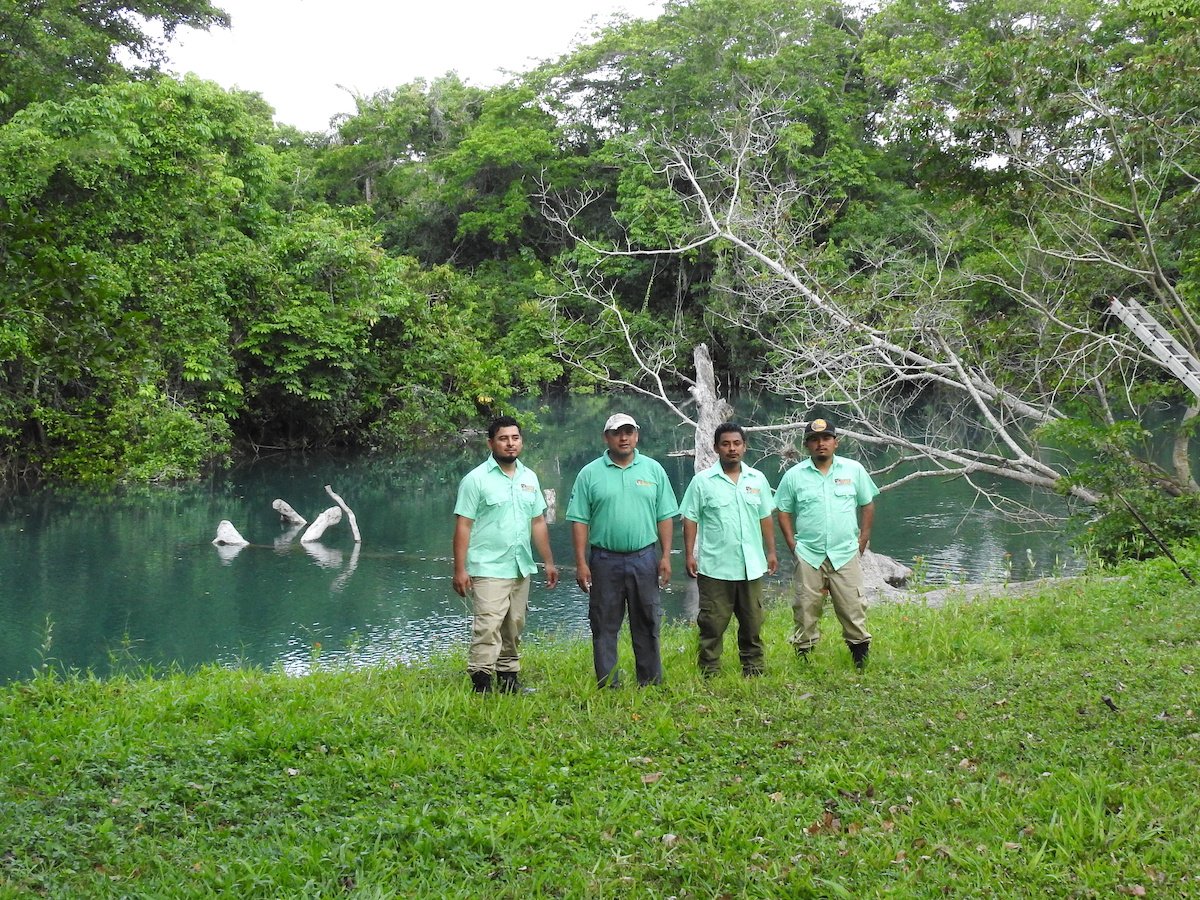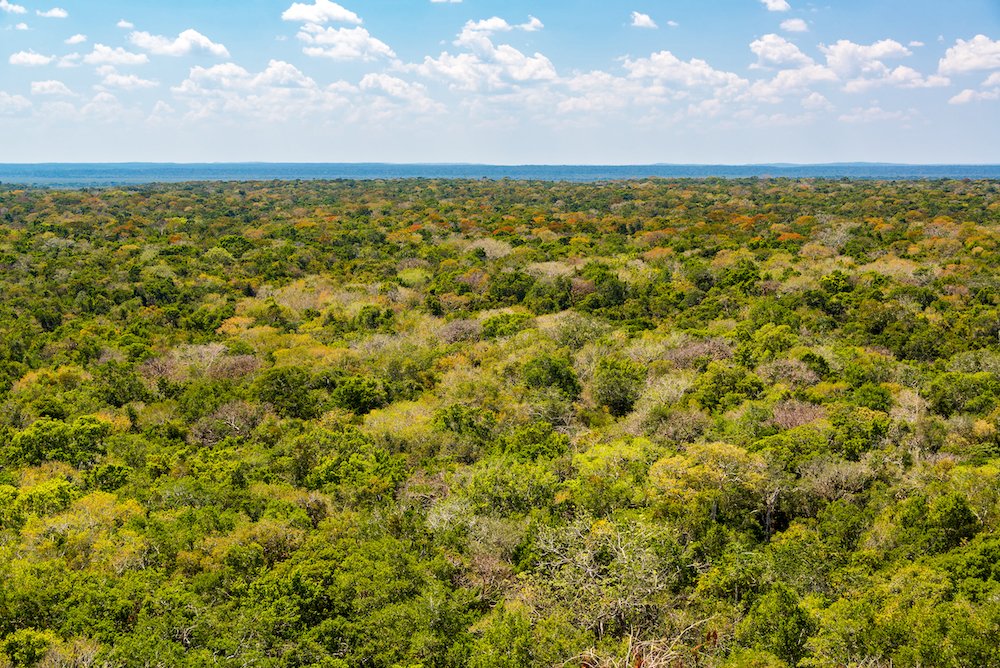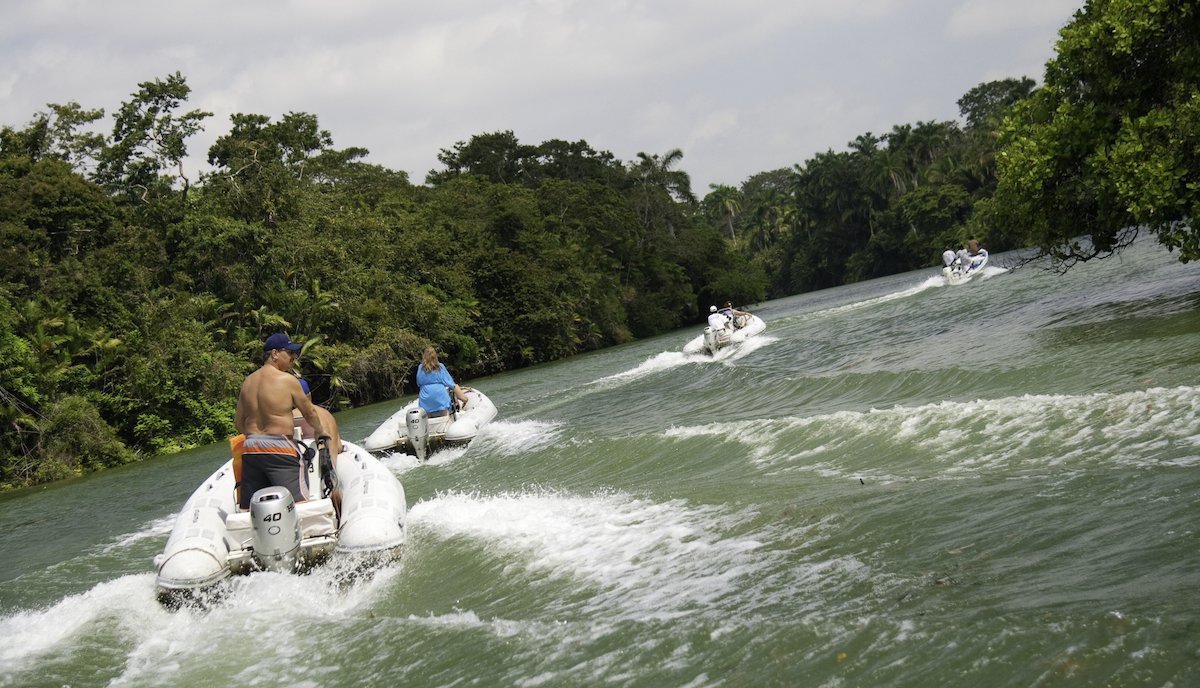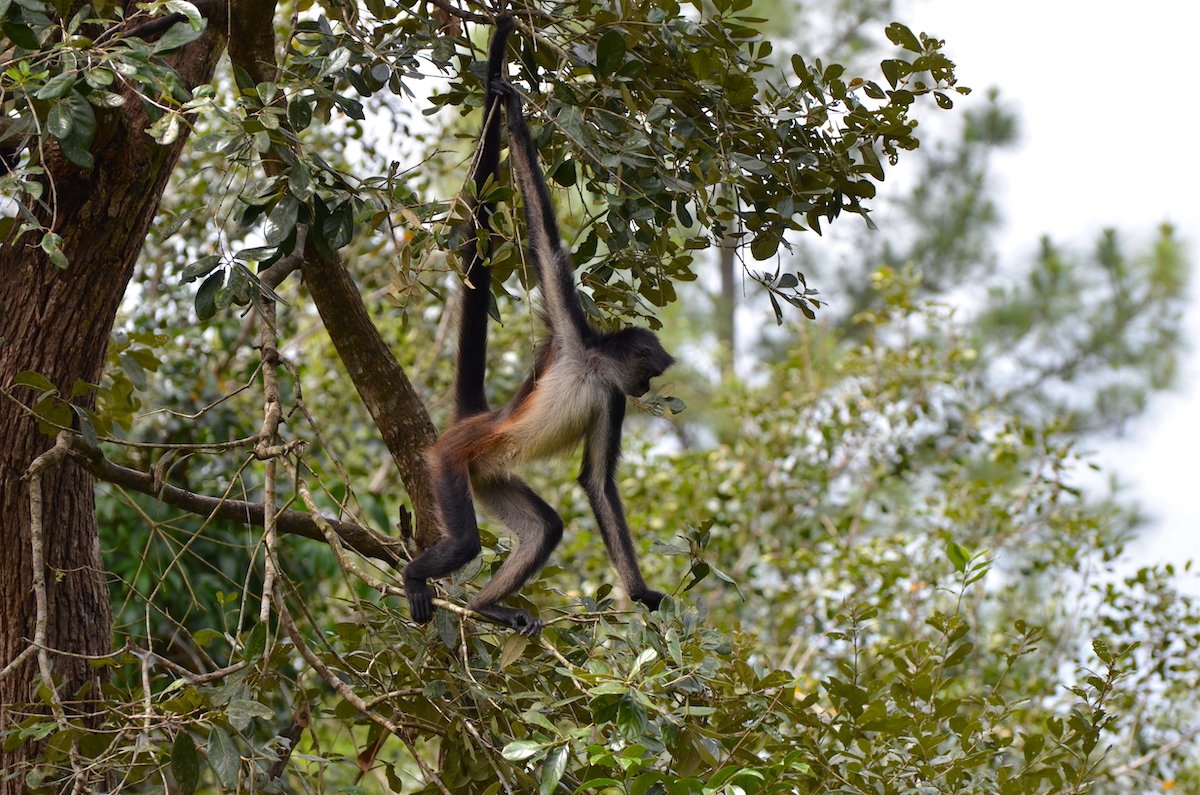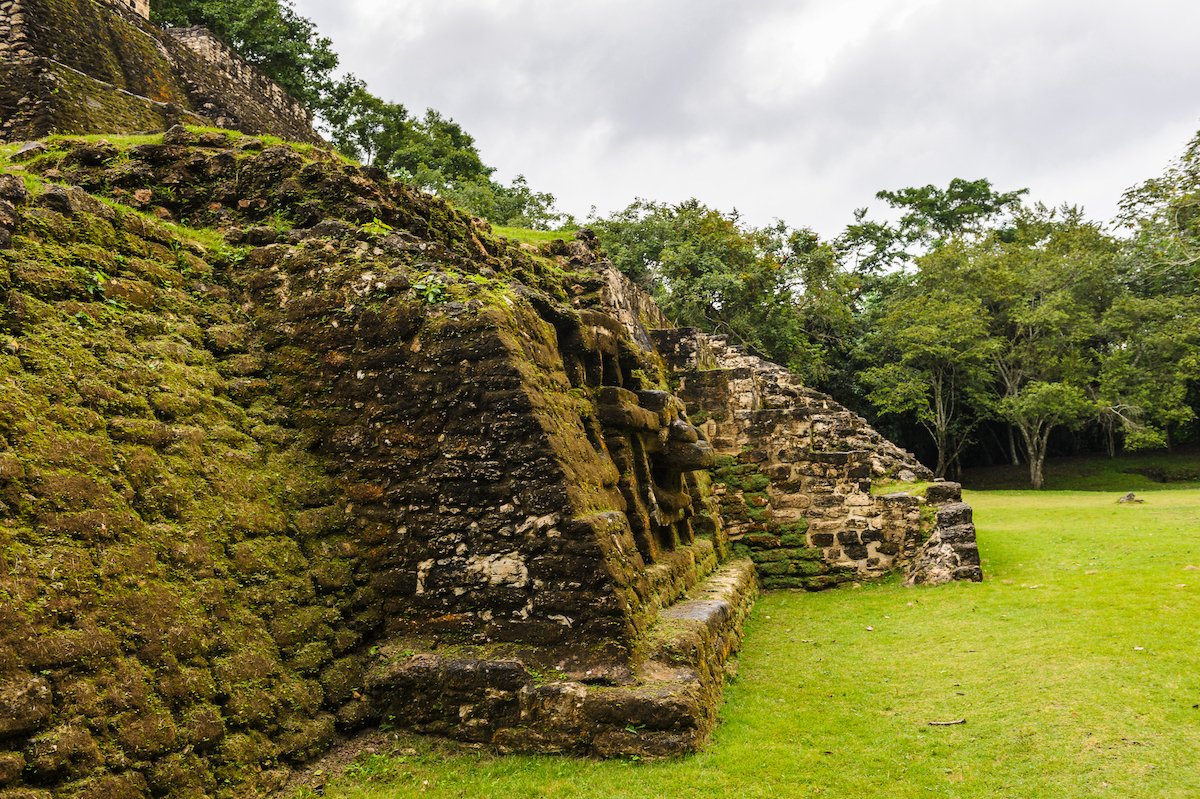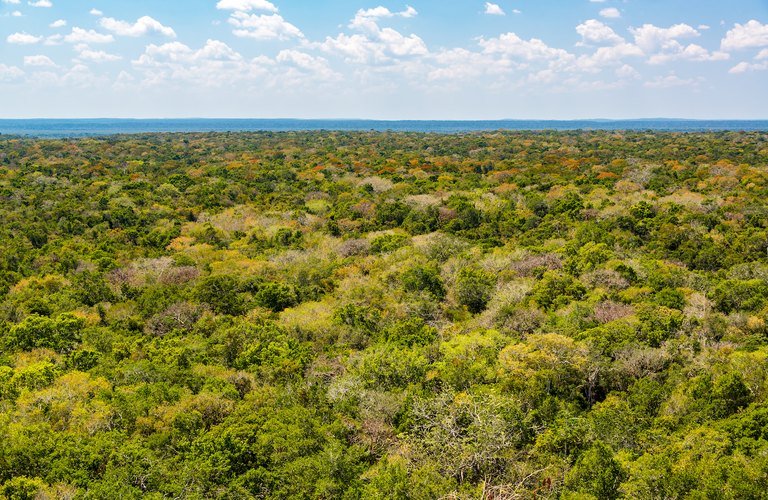Great Maya Forest, Belize
OVERVIEW
The Greater Belize Maya Forest is critical for the conservation of the Selva Maya, one of the world's largest remaining forests and a haven for jaguars and other threatened species.
SIZE
211,000 Hectares
GOAL
$580,000
VISITORS BY 2030
60,000
Introduction
In 2021, a consortium of more than a dozen conservation organizations purchased a critical piece of land: the Belize Maya Forest, a 96,000-hectare linchpin in Central America’s pristine Selva Maya. This purchase very likely saved this former forestry concession from being cleared for industrial-scale agriculture.
The Belize Maya Forest is adjacent to the Rio Bravo Conservation and Management Area (RBCMA), which has been protected since 1995. Together, these two pieces of land, which total almost 10% of Belize’s total land area, make up the Greater Belize Maya Forest. This reserve provides landscape protection across 521,392 acres (211,000 hectares) of savanna, wetlands, and tropical rainforest.
Its biodiversity is astonishing: the forest hosts 200 species of trees, 390 species of birds, and 80 species of mammals, including one of the world’s healthiest populations of jaguars and endangered wildlife like the Yucatán black howler monkey (Alouatta pigra).
The Selva Maya lies at the intersection of Belize, Guatemala, and Mexico. Its 15-million-hectare expanse is one of the largest and best protected forests in the world. Keeping this forest intact and maintaining corridors between its pieces is of crucial importance for the future of its wildlife, and for fighting global climate change. (Global Conservation is also working in another part of the Selva Maya: Mirador National Park in Guatemala).
Threats to the Belize Maya Forest
The principal threats to the Greater Belize Maya Forest include illegal logging, illegal hunting and fishing, wildfires, agricultural encroachment and illegal crop cultivation.
Additionally, the recently established Belize Maya Forest lacks rangers for patrolling and protecting the Belize Maya Forest. Due to this limitation, there has been an increase in illegal activities, especially illegal hunting, which needs to be urgently addressed to preserve the integrity of the reserve.
Currently, the major limitations for effectively extending the protection program are the inadequate number of rangers, the need for a vehicle/transportation, limited ranger gear and equipment, and the lack of appropriate communication and surveillance technology.
On a broader scale, the Greater Belize Maya Forest is just one piece of the Selva Maya, which is threatened by fragmentation. A proposed Maya Forest Corridor, for example, would connect the Greater Belize Maya Forest with the Maya Mountains Massif in southern Belize and the Selva Maya in Guatemala and Mexico, consolidating a 15.4-million-hectare area. That would make this the largest rainforest preserve north of the Amazon and the largest contiguous protected area in Central America. The corridor has already lost more than 65% of its forest cover due to sugarcane and other agricultural expansion, at a rate almost four times the national average. Protecting this corridor would help preserve the integrity of the Greater Belize Maya Forest and be another great win for the Selva Maya’s preservation.
Protecting the Belize Maya Forest
Global Conservation is dedicated to achieving "No Cut, No Kill" protection through our Global Park Defense program in the Belize Maya Forest. Global Park Defense increases ranger patrol and park protection effectiveness in critical ecosystems. GPD is a scalable system with technology and training tailored to each park, dramatically increasing the effectiveness of rangers and park authorities to protect their world heritage.
Four Stages of Global Park Defense:
1. Planning
Threat assessment, security and surveillance design, ranger deployment strategy.
2. Partnership
Wildlife and forestry, government, telecommunications and co-funding.
3. Protection
Community involvement, law enforcement and military support.
4. Sustainability
Governmental budgeting, tourism revenues and park financing.
Global Park Defense Plan of Action
1. Threat Assessment
Global Conservation begins with a detailed Threat Assessment, working with leading experts and local communities to identify the most threatened wildlife and core habitats.
2. Solutions and Protection Plan
We create a plan that most benefits each individual park and gives us the best opportunity to achieve our goals for protection, conservation, and sustainability.
3. System Deployment
All rangers, tech support personnel, and management are trained on equipment before it is deployed. Areas of interest are identified and logged to determine locations for surveillance equipment, patrol and maintenance routes, and nearby trails.
4. Annual Evaluation of Progress
In order to measure success, we first establish a baseline during the “Threat Assessment” phase. We then do an initial evaluation at six months and a yearly review to track progress. Proper adjustments in strategy will then be made.
5. Exit Strategy
It is important that we develop a plan to ensure sustainability once we complete a successful Global Park Defense project. GPD is a low-cost, highly effective program if deployed correctly and can be sustainable, even in underfunded parks, with proper planning. This often involves leaving a revenue stream and funding structure in place to support the project upon our exit.
The Programme for Belize has a protection program in the Rio Bravo Conservation and Management Area comprised of twelve rangers that protect three major entrance gates and patrol 200km (125 miles) of reserve boundary. They also monitor and respond to fires. This is complemented by community outreach and environmental education.
To achieve "No Cut, No Kill" protection, Global Conservation is supporting an additional six rangers for the Greater Belize Maya Forest. A vehicle, ranger gear and equipment, and appropriate communication and surveillance technology will also be provided to extend and enhance the efficiency of the protection program to the newly established reserve, the Belize Maya Forest Trust, and the Rio Bravo Conservation and Management Area.
The provision of appropriate surveillance technology will enhance the efficiency of the protection and surveillance of the reserve while increasing the safety of the rangers. Ultimately, this intervention will enhance the protection of the biodiversity and the environmental services of the Greater Belize Maya Forest.
PfB is developing viable economic land uses (sustainable development activities) in RBCMA’s buffer zone that leave the forest and its ecosystem services unaltered. One such activity is ecotourism; tourism is already a major industry in Belize, making up 40% of the country’s GDP. Carbon sequestration and the sale of carbon credits will also play an important role in ensuring the Greater Belize Maya Forest’s sustainability. The Rio Bravo Reserve has already certified 1.6 million tons of carbon offsets, totaling more than $1.5 million in carbon credits.
A 2020 survey by the Wildlife Conservation Society and the University of Belize’s Environmental Research Institute showed that 77% of people living near the proposed Maya Forest Corridor believed that protected areas are beneficial to communities. Most respondents also recognized how important natural resource conservation is.
Partners in Conservation
Programme for Belize (PfB), established in 1988, is a Belizean non-profit organization dedicated to conserving Belize’s natural heritage and promoting the sustainable use of its natural resources. Since its inception in 1988, Programme for Belize has acquired the Rio Bravo Conservation and Management Area (Rio Bravo or RBCMA), 250,000 acres (>100,000 hectares) of tropical moist forest in northwestern Belize which was destined to be logged.
Rio Bravo is a flagship project where Programme for Belize demonstrates the practical application of itsmission to conserve biodiversity and promote the sustainable development of Belize’s natural resources. As such, the RBCMA reserve is managed based on the man-and-biosphere reserve principle, where a portion of the area is strictly preserved, while the buffer is used for sustainable development so long as: 1) it does not have a significant negative impact on the biodiversity and ecosystem services of the forest; and 2) it is economically viable and generates revenue for the protection and management of the entire reserve.
Belize Maya Forest Trust
The Belize Maya Forest Trust is a Belizean non-profit organization established in 2020 for the conservation and management of the Belize Maya Forest Trust lands comprised of 271,816 acres tropical moist forest formerly known as the Yalbac and Laguna Seca Lands. The Belize Maya Forest Trust lands are home to a wide diversity of flora and fauna including neotropical migrant birds and all five central American wild cats, species of conservation concern.
Did you know? Belize is a leader in conservation, with nearly 40% of its land already protected. Its government boasts a national biodiversity office and a Ministry of Blue Economy, which focuses on marine resources and climate change.


